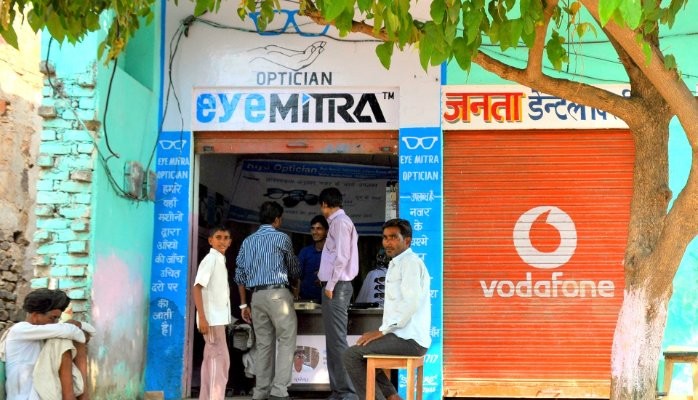
How to scale $1.25 to a billion dollar business – Essilor’s disruptive strategy in India
Emerging markets present a tremendous opportunity for enterprises to grow their business. At last week’s “Emerging Markets” class at the Nanyang MBA, we studied how the French ophthalmic lens manufacturer Essilor has successfully managed to penetrate the Indian market and provide spectacles to millions of under-served citizens. Most interestingly, their strategy to partner with local providers has turned out to be an amazing CSR story.
Spectacles have for many years been reserved for consumers with stable incomes, thus excluding millions of people living in extreme poverty to the possibility of owning a pair. According to the United Nation’s Millennium Development Goal (MGD) programme, in 2012, 270 million or 21.9% of 1.2billion Indians lived below the poverty line of $1.25 a day. The total market for vision correction in India is estimated to be 500 million people, which makes it a very attractive market.
Corrected vision may not seem so important on the surface. However, let’s look at it from a economic perspective. Blurred vison affects productivity, which has a negative impact on one’s ability to work themselves out of poverty. This makes vision correction extremely important. One of the challenges facing the demographics at the bottom of the pyramid is that they depend on working every day to sustain their living. Because opticians most often are located in towns far away from the villages, it is simply not an option to miss even a day’s worth of income to go get an eyesight examination. Furthermore, the consultation as well as the price of the spectacles would not be affordable for people of the villages.
If the customer won’t come to you, you must go to the customer
In 2003, Essilor together with local partner Sankara Nethralaya, launched the Mobile Refraction Van initiative that provides affordable eye care in rural India. In a matter of hours, a patient would have undergone a full eye examination and been provided with a brand new pair of spectacles starting at merely $1.
Another initiative is the Eye Mitra, which is a training program aimed to train unemployed rural youth to become opticians and set up local micro enterprises which provide door to door eye care services and sell locally manufactured spectacles embedded with Essilor technology.
Doing business in Emerging Markets
One of the main challenges of doing business in Emerging Markets is to deal with local governments and regulators. Volatile governments can with no warning nationalize your business and/or freeze your assets in the country. Seeking a strong relationship with the local authorities is therefore an essential strategy for foreign investors.
Essilor’s Eye Mitra initiative is a local jobs creator and helps strengthen Essilors relationship with the local authorities.
Why pursue the bottom of the pyramid?
There are several strategic reasons for pursuing the bottom of the social economic pyramid:
- Creating future customers
By serving the bottom of the pyramid, Essilor is establishing a whole new market of customers. Before the Mobile Refraction Van initiative, rural citizens didn’t know that they needed vision correction. What Essilor has realized is that the poorest citizens are leapfrogging the pyramid and improving their economic situation rapidly to move up the social economic ladder. The belief is that these future powerful consumers will remember Essilor and show brand loyalty when purchasing their first $50 Spectacles. - Blue Ocean: A large under-served market
Serving the bottom of the pyramid means that you must pursue an “economies of scale” strategy. The 500 million people that are estimated to need vision correction represent a billion dollar market. Entry into this market can be considered a blue ocean strategy, since no existing lens manufacturer is servicing this market. In other words it is totally under-served and available for Essilor to grab. - Strong CSR
Naturally Essilor’s cash cow is in the developed markets, where they are charging upwards of $1000 for a pair of lenses. A strong CSR profile helps attract customers and help justify the steep price points. Essilor is heavily using its initiatives in India for branding purposes and have succeeded in creating a very strong CSR profile. - Disruptive innovation
Serving a low end segment requires new innovation. Not in terms of features, but in terms of price. Essilor has invested in new manufacturing methods that allow them to manufacture lenses at a cheaper price point. This technology can as well be applied for production in the developed markets to improve profit margins in those markets.